| | Steps to planning your farm water system | Section A. Dugout water shortages | Possible solutions | Section B. Water well supply shortages | Section C. Off-farm options
The severe province-wide drought in the early 2000’s reaffirmed the importance and value of water to rural people across the Canadian prairies. Dry wells and dugouts, crop failures and dust storms were all commonplace.
Background
During the drought, farmers scrambled to find sufficient water for their homes and livestock. Water hauling by truck and miles of water pipelines could be seen everywhere. Thousands of larger dugouts and deeper wells were constructed to replace failed water supplies.
The financial, technical and equipment resources of farmers, industry, provincial and federal governments were all stretched to the limit in addressing this problem. The most positive aspect of the drought was people working together and redefining water management.
During the mid ‘70’s to the mid ‘80’s, agricultural water management often meant “drain and develop.” Thousands of acres of sloughs and wetlands were drained to provide more land for agriculture.
The drought reaffirmed the value of these areas in recharging groundwater sources and providing back-up surface water supplies and wildlife habitat. In some areas, dams constructed by four-legged engineers (beavers) provided the only source of livestock water for miles. Many traditional sources of livestock water, including sloughs and small dugouts, were dry.
Water is essential to all human activity (Figure 1). The way water resources are managed will determine the future of the prairie economy. Security of water supply has been a primary goal of Canada/Alberta cost-share programs since the drought in 2000. The latest program suite is called the Canadian Agricultural Partnership and it began April 1st, 2018. Under this Partnership, the Farm Water Supply Program provides technical support and financial incentives to improve and protect water supplies of agricultural producers in Alberta.
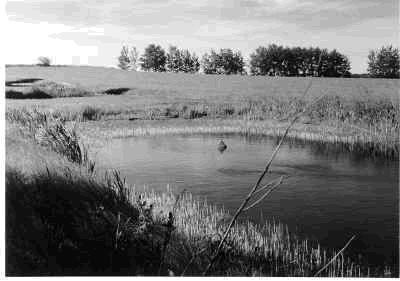
Figure 1. Water is essential
Steps to Planning Your Farm Water System
The following steps are intended to help farmers identify their farm water supply and system requirements and problems. The steps also provide some short and long-term solutions.
Section A. Dugout Water Shortages
Identifying the problems/issues
(Check the appropriate blanks that apply to your operation)
_______ inadequate water storage
_______ losses in water storage or sedimentation from runoff
_______ insufficient drainage area/runoff
_______ seepage losses
_______ evaporation losses
Possible Solutions
Inadequate water storage
Temporary solution:
- Truck or pump water from another source. High capacity water pumping equipment is available for rent through Agriculture and Forestry and its Water Pumping Program (Figure 2).
Long-term solution:
- Enlarge the dugout to hold a three-year water supply for runoff filled dugouts.
- Drill a well nearby and pump into a stock tank system and overflow into the dugout.
- Install an underground pipeline from another water source.
Losses in water storage or sedimentation from runoff
In Alberta, losses in water storage volume or sedimentation from runoff generally caused by cattle trampling dugout banks range from 1 to 10 per cent per year, depending on soil conditions and cattle numbers. The average sedimentation loss for a dugout is about 2 to 3 per cent per year.
Temporary solution:
- Clean out the dugout every 10 to 15 years.
Long-term solution:
- Install sedimentation traps and grassed waterways (with erosion mats if necessary) to the channels feeding the dugout.
- Fence the dugout and install a pumping system and/or stock tank for watering livestock (see Remote Pasture Water Systems for Livestock, Agdex 400/716 (C30).
- Level all excavated spoil piles and seed to grass.
- In highly erodible watersheds, grassing the entire area may be necessary. For more information on grassed waterways, see Grassed Waterway Construction, Agdex 573-6.
Insufficient drainage area/runoff
Temporary solution:
- Truck in water or pump from another water source.
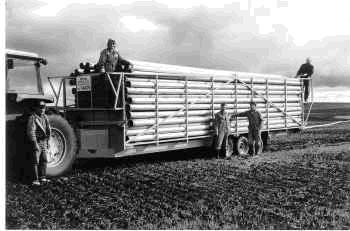
Figure 2. Water pumping program
Long-term solution:
- Enhance runoff area with snow fences or shelterbelts (Figure 3).
- Construct interceptor ditches to collect more runoff.
- Drill a well as a supplemental source near the dugout.
- Use an underground pipeline from another source.
- Dig another dugout that has a larger drainage area to supply the dugout.
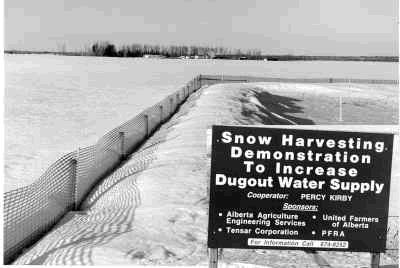
Figure 3. Plastic snow fence placed around the perimeter of a dugout
Dugout seepage losses
The first step is to try to identify the location of the seepage loss and the soil type involved. Test holes and soil samples should be taken around the dugout to determine the problem, such as sand and gravel lenses or fractured clays. Select the most appropriate sealing technique based on the soil type, cost and use of the dugout.
Do not allow cattle direct access for watering, or they will destroy the type of lining used for sealing the dugout (see Seepage Control in Dugouts, Agdex 716(B32). Use a pumping system to deliver water to the cattle (see Remote Pasture Water Systems for Livestock, Agdex 400/716 (C30).
Evaporation losses
Long-term solution:
- Construct shelterbelts on the prevailing wind side of the dugout.
- Installing plastic covers may be worth considering in southern Alberta where evaporation losses are typically 3 to 4 feet per year (Figure 4).
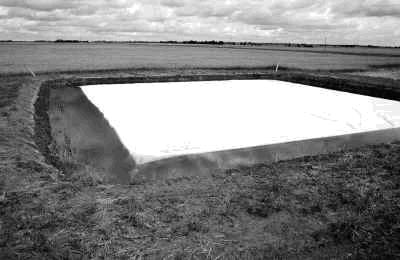
Figure 4. Plastic cover to reduce dugout evaporation losses
Section B. Water Well Supply Shortages
To start with, check the well pump as it may be the problem. Wherever possible, locate and review the information on the Water Well Drillers Report provided at the time of drilling. The Alberta Groundwater Information Centre in Edmonton may be able to help you with this aspect. Their toll-free telephone number is 310-0000 and then dial 427-2770.
The Water Well Drillers Report will generally show the static water level (non-pumping water level), the recommended pumping rate, plus the construction of the well. A comparison of static water levels at the time of drilling will help to identify if the groundwater source is depleting (i.e., dropping static water level). If this is the situation, deepening the well or drilling a new, deeper well may be necessary.
For wells where the static water level has not changed, the aquifer is still okay, and the problem may be that the perforated casing or area around the well is plugged. Initially, try a shock chlorination treatment of the well. If this step does not restore well production, hire a well driller to assist with sediment or mineral plugging problems. He/she may provide a well level recorder to measure the static water level.
Low producing wells
Cisterns are a good option for low producing wells that do not keep up to the peak demands of the farm but will eventually supply all the daily water requirements. For farmstead supplies, an underground cistern that holds from one-half to one day water storage is recommended.
The cistern will allow the well to be pumped at a rate lower than the well can safely produce. A second pump and pressure system can then be used to supply the water at a faster rate to meet the peak water demands of the system. If water needs to be hauled, make sure the cistern will hold at least one tanker load of water.
Slow producing wells used for pasture water supplies can be pumped into storage or stock tanks and overflowed into a small dugout where necessary.
Section C. Off-farm Options
Temporary solution:
- Water pumping and water hauling.
Long-term solution:
- Develop community projects in water shortage areas. Possible water sources include the following:
- high capacity well or springs
- surface water sources (creeks, rivers, lakes)
- pipeline or canal systems to distribute water
- community tank loading facilities (Figure 5)
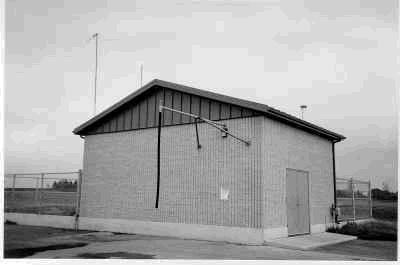
Figure 5. Tank loading facilities
Many farmers have tried unsuccessfully to solve all water supply problems on their own farms. Group projects may be a better alternative.
These group projects also provide an excellent opportunity for municipalities to become involved. For example, when municipalities are upgrading their road infrastructure, some strategic placement of large borrow pits can provide drought proofing for an area.
In many areas, municipalities have also been involved in groundwater test drilling programs to locate significant groundwater aquifers in water shortage areas (Figure 6). These higher producing aquifers can become excellent locations for tank loading facilities or regional pipelines.
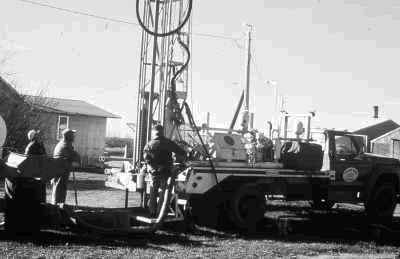
Figure 6. Test drilling to locate groundwater aquifers
Group projects
Pipelines or canals to carry water to the farm. Possible sources include the following:
- high capacity wells or springs
- surface water sources (creeks or rivers)
- canal systems
Household water conservation
Many water saving devices can be used to cut down water usage in the house:
- low flush toilets
- toilet damps
- flow restriction shower heads
Repairing all leaking taps and plumbing fixtures is also important as these faulty fixtures can cause significant losses.
Example: 1 drip = 1/2 ml @ 2 drips/sec = 86.4 litres/day
As for yard and garden areas around the house, try to select trees, shrubs, etc. that are very resistant to dry prairie conditions. When watering gardens and lawns, apply larger volumes of water weekly rather than a light sprinkling of water daily. Apply in the morning or at times when temperatures are cooler and the wind is down. For some types of garden crops, a trickle irrigation system efficiently supplies water directly to the plant.
Another source of plant and garden water is roof runoff from houses and sheds that can be captured into holding tanks.
Summary
Individually, these measures may not provide the level of drought protection needed, but when combined, they can provide a high degree of drought preparedness and security.
A good understanding of your water requirements and water source options is a key first step. This factsheet provides information about drought security related to your water source. Other forms of risk management, such as crop insurance, community networks or reducing livestock herds, are discussed in other Agriculture and Forestry publications.
For more information, contact
Alberta Ag-Info Centre at 310-FARM (3276) who can refer you to an Agricultural Water Specialist if necessary.
Prepared by
Alberta Agriculture and Forestry – Irrigation and Farm Water Supply Division
Source: Agdex 716 (A01). Revised September 2018. |
|